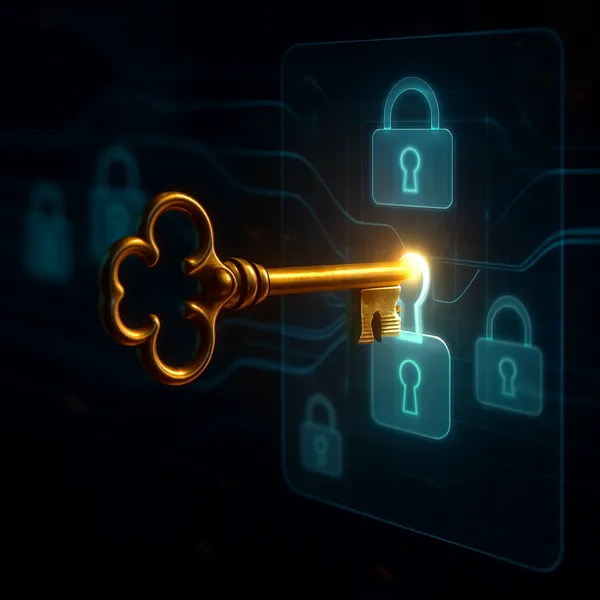Data Security by Design - End-to-End Encryption and Access Controls
Published on: Sun May 05 2024 by Ivar Strand
**Data Security by Design: Implementing End-to-End Encryption and Access Controls
Introduction
The collection of sensitive data in development and humanitarian projects is not an incidental activity; it is a core function that carries profound ethical weight. The information we gather—about individuals’ health, finances, displacement status, and experiences of violence—represents a significant liability if mishandled. Protecting this data from unauthorized access, breaches, and misuse is therefore not a secondary IT concern, but a fundamental operational and ethical imperative. Fulfilling this duty requires a “Security by Design” approach, where robust protections are woven into the fabric of a system from its inception, not applied as an afterthought.
The problem is how to translate this principle into practice. A truly secure framework rests on two distinct but complementary pillars: robust end-to-end encryption to protect data wherever it is, and strict, role-based access controls to manage who can see it. This paper outlines a practical framework for implementing these controls and candidly discusses the necessary operational consequences that accompany a commitment to high-assurance data security.
The Guiding Principle of a Zero-Trust Architecture
The philosophical foundation for a secure system is the principle of “Zero Trust.” This model discards the outdated idea of a trusted internal network and an untrusted external world. Instead, it assumes that all networks are potentially hostile and that trust must never be implicit. Every user, device, and connection must be continuously verified.
End-to-End Encryption (E2EE) is the purest technical manifestation of this principle. In an E2EE system, data is encrypted on the user’s device (e.g., a field enumerator’s phone) before it is ever transmitted. It remains in this encrypted state while in transit and while stored on the server. It can only be decrypted by the intended recipient(s) who possess the correct cryptographic keys. Critically, this means the service provider hosting the data—even our own organization’s central IT administrators—cannot access the content. This approach dramatically minimizes the attack surface; even if a server is breached, the attackers will only find ciphertext, a collection of useless, unreadable data.
A Framework for End-to-End Data Protection
Implementing a zero-trust model requires a systematic approach to the entire data lifecycle.
- Step 1: End-to-End Encryption as the Default Standard. The baseline for any system handling sensitive data must be E2EE. Data is encrypted at the point of creation on the client device. It is transmitted securely to a central repository where it is stored in its encrypted form. It is only ever decrypted locally on the client device of an authorized user who has been authenticated and granted the appropriate decryption key. This ensures confidentiality at every stage.
- Step 2: Implementing Granular, Role-Based Access Controls (RBAC). E2EE protects the data from outsiders, while RBAC protects it from insiders. This is the system that governs who is authorized to receive decryption keys. An administrator must be able to define specific user roles (e.g.,
Field Officer,Project Manager,M&E Specialist,Donor Auditor) and assign precise permissions to each. These permissions dictate exactly which projects, datasets, or even which specific fields within a dataset a user can access. When an authorized user logs in, the system verifies their identity and securely delivers only the keys for the data they are explicitly permitted to view. This enforces the principle of least privilege, ensuring no one has access to more information than is absolutely necessary for their function. - Step 3: Maintaining a Secure and Auditable Chain of Custody. The framework is supported by a set of rigorous operational protocols. This includes mandatory full-disk encryption and strong passcodes on all end-user devices (laptops and mobiles); a secure protocol for managing and rotating cryptographic keys; and a comprehensive, immutable audit log that records every access request, both successful and failed.
The Operational Dilemma: The Trade-Offs of True Security
A commitment to a high-assurance security model like E2EE has unavoidable operational consequences. It requires a conscious trade-off, prioritizing data safety over convenience and seamless integration with standard business tools.
The primary dilemma arises with data analysis and sharing. True E2EE is fundamentally incompatible with the vast majority of third-party cloud-based services, including popular business intelligence (BI) dashboards like Google Data Studio or Microsoft Power BI. These platforms require direct access to raw, unencrypted data on their servers to perform calculations and generate visualizations. An organization cannot connect Power BI to an E2EE database and build a live, interactive dashboard; the service simply cannot decrypt the information.
This has significant operational consequences. Data analysis must often be performed on a local, authorized machine after the data has been securely decrypted, rather than within a collaborative cloud environment. Dashboards and reports may need to be generated as static, exported files (like a PDF) from within the secure system, rather than existing as live, shareable web links. Sharing data with an external partner becomes a more deliberate process, requiring the secure transfer of decryption keys rather than simply granting access to a shared folder on Google Drive. These tools, built for frictionless collaboration, are often architecturally unsuited for a zero-trust security model.
Security as a Precondition for Trust
Implementing a robust security framework is not a purely technical exercise; it is a strategic decision about risk management and ethical responsibility. The operational trade-offs are real. A true E2EE system is less flexible and more cumbersome than a conventional cloud setup. It requires more deliberate planning for data sharing and forecloses the use of many standard analytical tools.
However, in the context of our work—handling sensitive information about the world’s most vulnerable populations—these consequences are not a reason to compromise on security. They are the necessary and acceptable price of upholding our Duty of Care. In this domain, data security cannot be an afterthought or a “nice-to-have.” It is the absolute precondition for building and maintaining the trust of the communities we serve, the partners we work with, and the stakeholders who fund our missions.



